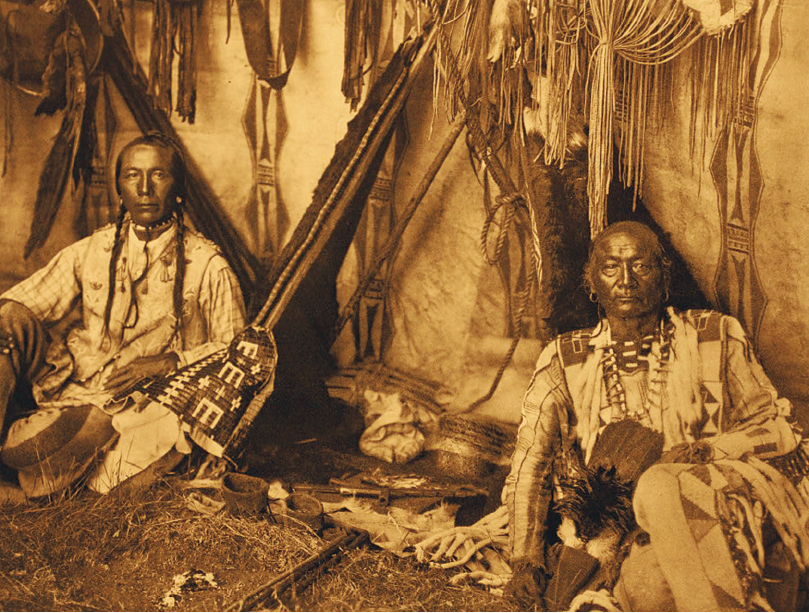The End of Armed Resistance
As the nation consolidated control of the West in the 1870s, Americans hoped that Grant’s peace policy was solving the “Indian problem.” In the Southwest, such formidable peoples as the Kiowas and Comanches had been forced onto reservations. The Diné or Navajo nation, exiled under horrific conditions during the Civil War but permitted to reoccupy their traditional land, gave up further military resistance. An outbreak among California’s Modoc people in 1873 — again, humiliating to the army — was at last subdued. Only Sitting Bull, a leader of the powerful Lakota Sioux on the northern plains, openly refused to go to a reservation. When pressured by U.S. troops, he repeatedly crossed into Canada, where he told reporters that “the life of white men is slavery. … I have seen nothing that a white man has, houses or railways or clothing or food, that is as good as the right to move in open country and live in our own fashion.”

In 1874, the Lakotas faced direct provocation. Lieutenant Colonel George Armstrong Custer, a brash self-promoter who had graduated last in his class at West Point, led an expedition into South Dakota’s Black Hills and loudly proclaimed the discovery of gold. Amid the severe depression of the 1870s, prospectors rushed in. The United States, wavering on its 1868 treaty, pressured Sioux leaders to sell the Black Hills. The chiefs said no. Ignoring this answer, the government demanded in 1876 that all Sioux gather at the federal agencies. The policy backfired: not only did Sitting Bull refuse to report, but other Sioux, Cheyennes, and Arapahos slipped away from reservations to join him. Knowing they might face military attack, they agreed to live together for the summer in one great village numbering over seven thousand people. By June, they were camped on the Little Big Horn River in what is now southeastern Montana. Some of the young men wanted to organize raiding parties, but elders counseled against it. “We [are] within our treaty rights as hunters,” they argued. “We must keep ourselves so.”

The U.S. Army dispatched a thousand cavalry and infantrymen to drive the Indians back to the reservation. Despite warnings from experienced scouts — including Crow Indian allies — most officers thought the job would be easy. Their greatest fear was that the Indians would manage to slip away. But amid the nation’s centennial celebration on the Fourth of July 1876, Americans received dreadful news. On June 26 and 27, Lieutenant Colonel Custer, leading the 7th Cavalry as part of a three-pronged effort to surround the Indians, had led 210 men in an ill-considered assault on Sitting Bull’s camp. The Sioux and their allies had killed the attackers to the last man. “The Indians,” one Oglala woman remembered, “acted just like they were driving buffalo to a good place where they could be easily slaughtered.”
As retold by the press in sensational (and often fictionalized) accounts, the story of Custer’s “last stand” quickly served to justify American conquest of Indian “savages.” Long after Americans forgot the massacres of Cheyenne women and children at Sand Creek and of Piegan people on the Marias River, prints of the Battle of Little Big Horn hung in barrooms across the country. William F. “Buffalo Bill” Cody, in his traveling Wild West performances, enacted a revenge killing of a Cheyenne man named Yellow Hand in a tableau Cody called “first scalp for Custer.” Notwithstanding that the tableau featured a white man scalping a Cheyenne, Cody depicted it as a triumph for civilization.
Little Big Horn proved to be the last military victory of Plains Indians against the U.S. Army. Pursued relentlessly after Custer’s death and finding fewer and fewer bison to sustain them, Sioux parents watched their children starve through a bitter winter. Slowly, families trickled into the agencies and accommodated themselves to reservation life (Map 16.6). The next year, the Nez Perces, fleeing for the Canadian border, also surrendered. The final holdouts fought in the Southwest with Chiricahua Apache leader Geronimo. Like many others, Geronimo had accepted reservation life but found conditions unendurable. Describing the desolate land the tribe had been allotted, one Apache said it had “nothing but cactus, rattlesnakes, heat, rocks, and insects. … Many, many of our people died of starvation.” When Geronimo took up arms in protest, the army recruited other Apaches to track him and his band into the hills; in September 1886, he surrendered for the last time. The Chiricahua Apaches never returned to their homeland. The United States had completed its military conquest of the West.
EXPLAIN CONSEQUENCES